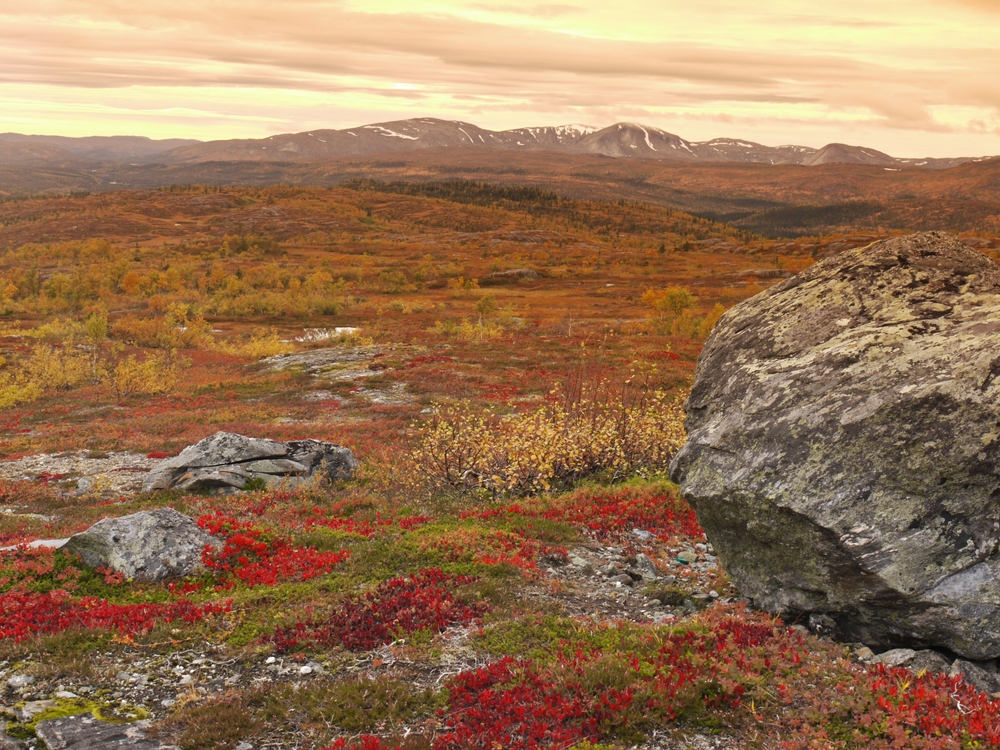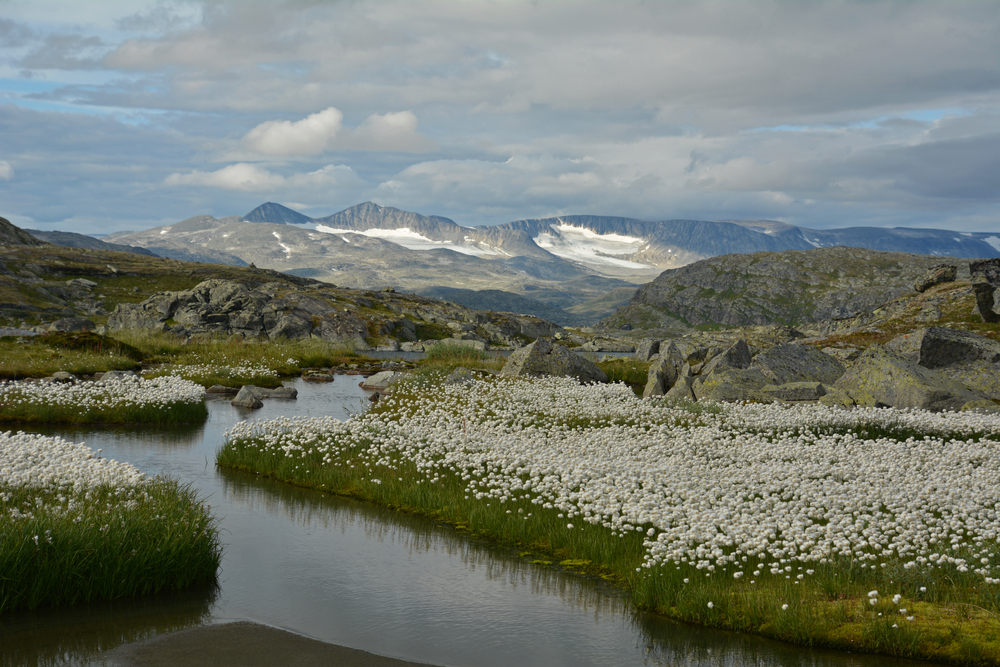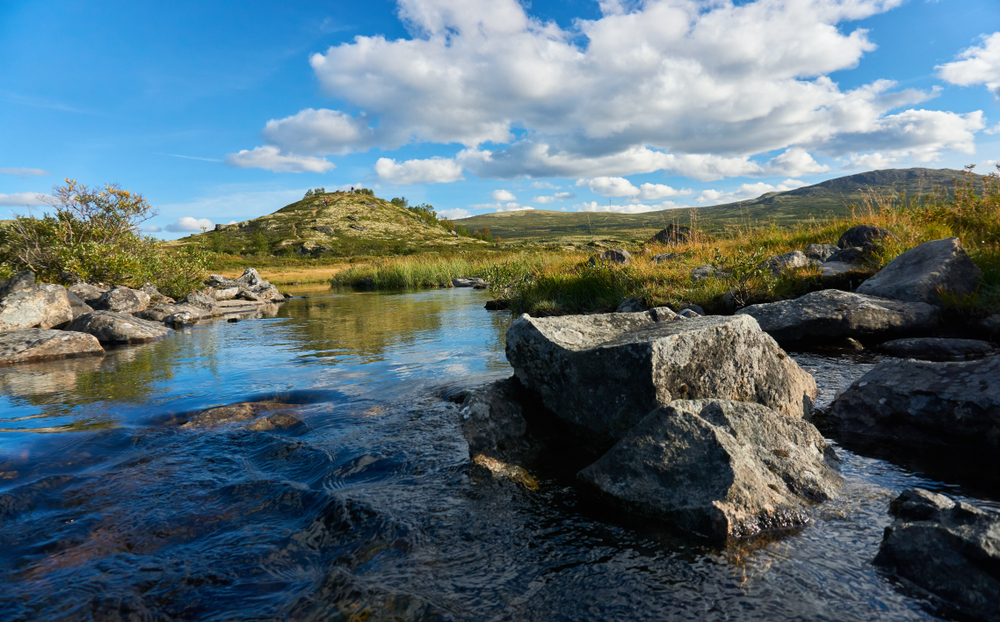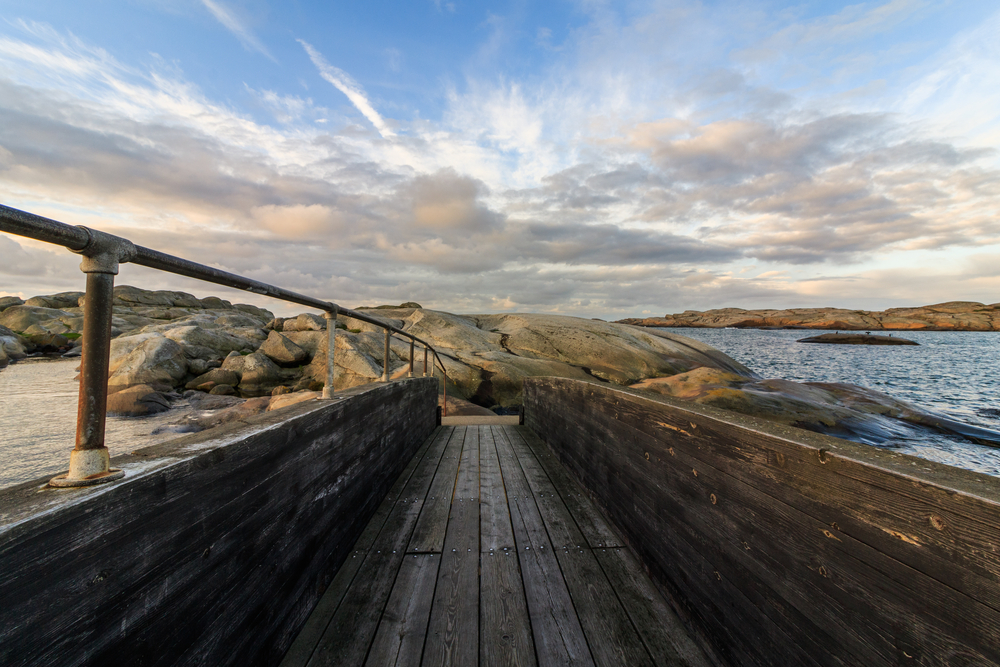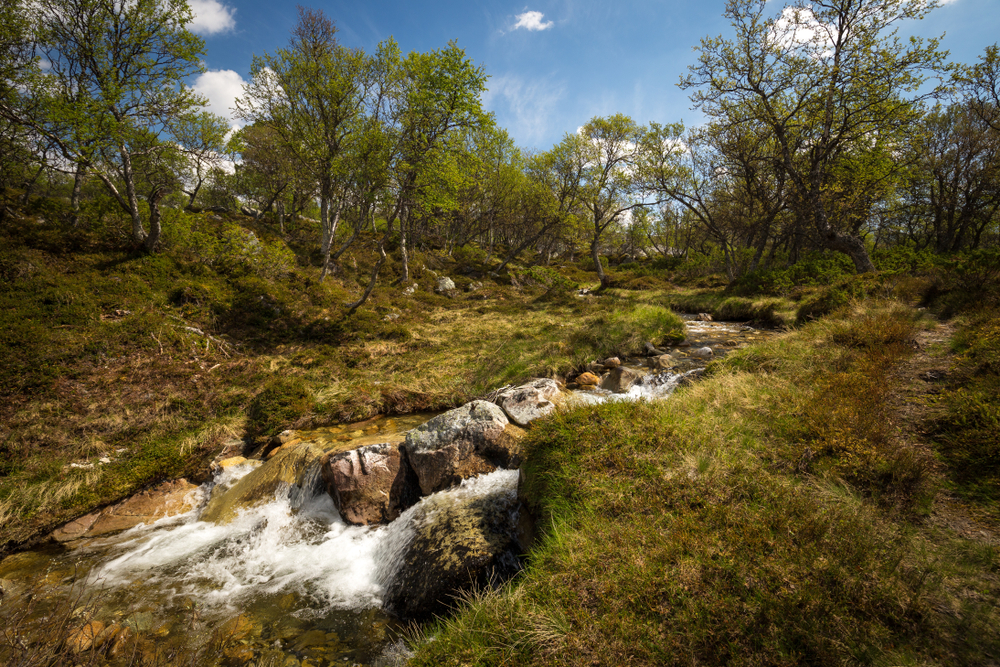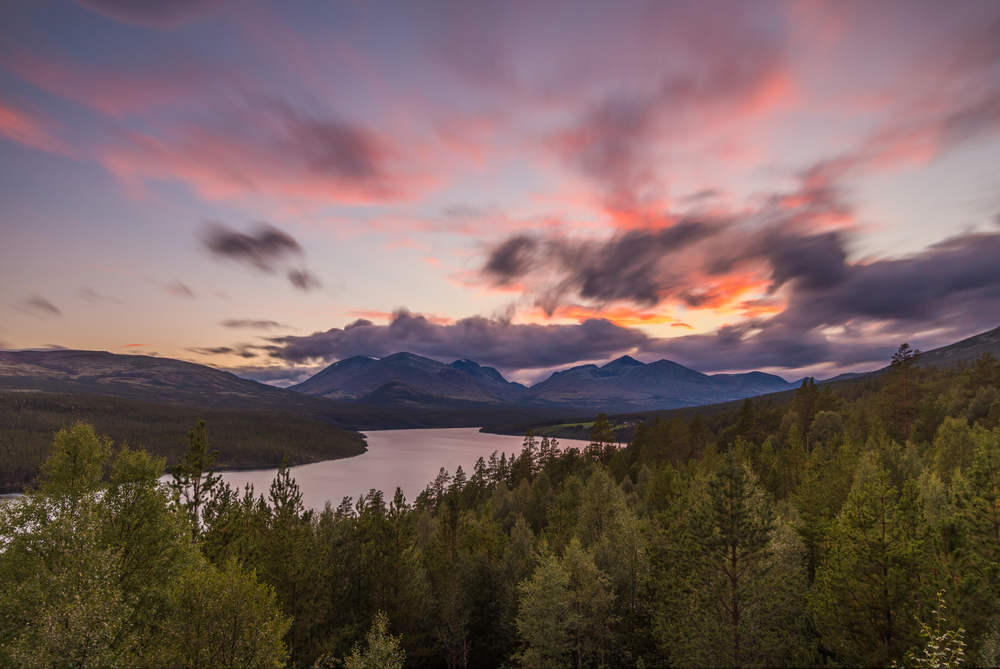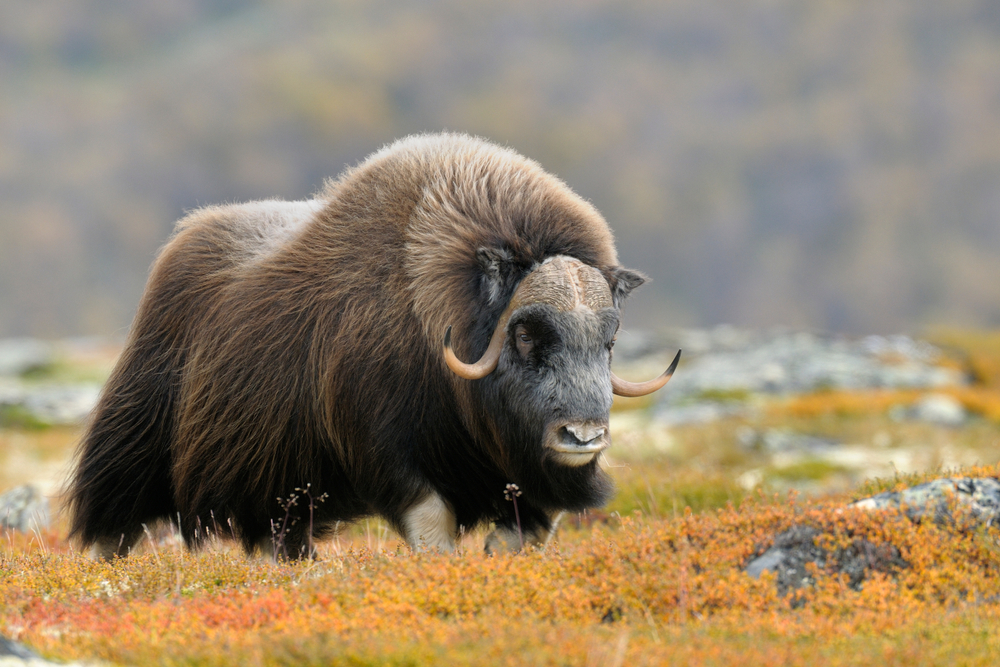Folgefonna Overview
Folgefonna National Park, known as Folgefonna nasjonalpark in Norwegian, is located in Vestland County, Norway. Covering approximately 207 square miles (545 square kilometers), the park was established in 2005 to protect the Folgefonna Glacier and its surrounding landscapes.
Folgefonna is Norway’s third-largest glacier and serves as the park’s defining feature, stretching across the Hardanger region with its dramatic ice formations, deep crevasses, and towering ice walls. The park encompasses rugged terrain, steep mountains, and scenic fjords, creating a breathtaking natural setting where glaciers meet lush valleys and cascading waterfalls.
The landscapes within the park range from icy expanses to verdant meadows and dense forests. Meltwater from Folgefonna Glacier feeds several powerful waterfalls, including the famous Furebergsfossen, which plunges directly into Maurangerfjord. Glacial rivers such as Bondhusbreen and Juklavassbreen carve through the valleys, forming striking blue ice formations and lagoons.
The park also features alpine plateaus, where hardy vegetation, including mosses, lichens, and small shrubs, thrives in the harsh conditions. Lower elevations are home to birch forests and wildflowers that bloom in the short summer season.
Wildlife within Folgefonna National Park is diverse despite its challenging environment. Mammals such as red foxes, moose, and Eurasian lynx roam the forests and open valleys, while smaller species like stoats and hares adapt to the changing seasons.
Birdwatchers may spot golden eagles soaring above the cliffs, white-throated dippers navigating fast-moving rivers, and ptarmigans camouflaging in rocky landscapes. The glacial streams and lakes support brown trout, making them attractive for anglers.
One of the park’s most popular attractions is the Folgefonna Glacier itself, which draws hikers, climbers, and glacier enthusiasts. Guided glacier hikes allow visitors to traverse the ice, exploring deep crevasses and witnessing the glacier’s constant movement. The Bondhusdalen Valley offers one of the most scenic hiking routes, leading to the mesmerizing Bondhusvatnet Lake, known for its turquoise waters reflecting the surrounding peaks.
Kayaking in the fjords provides another immersive way to experience the park’s pristine waters and dramatic scenery. Winter activities such as skiing and snowshoeing are also available, with the Folgefonna Summer Ski Center offering the unique opportunity to ski on the glacier even in the warmer months.
Conservation efforts within Folgefonna National Park focus on preserving the glacier and its fragile ecosystem amid climate change. Folgefonna has been retreating in recent years, raising concerns about long-term glacial melt and its impact on freshwater sources.
However, sustainable tourism initiatives, including educational programs and eco-friendly visitor facilities, help raise awareness about environmental protection. The park’s management prioritizes balancing outdoor recreation with conservation, ensuring that future generations can experience its breathtaking landscapes.











































































